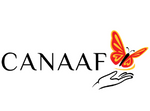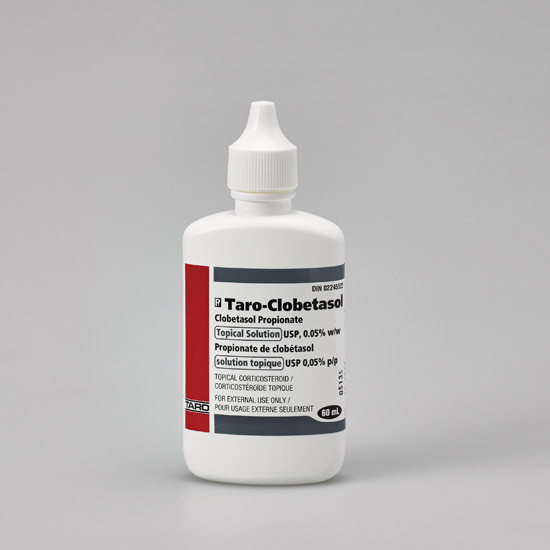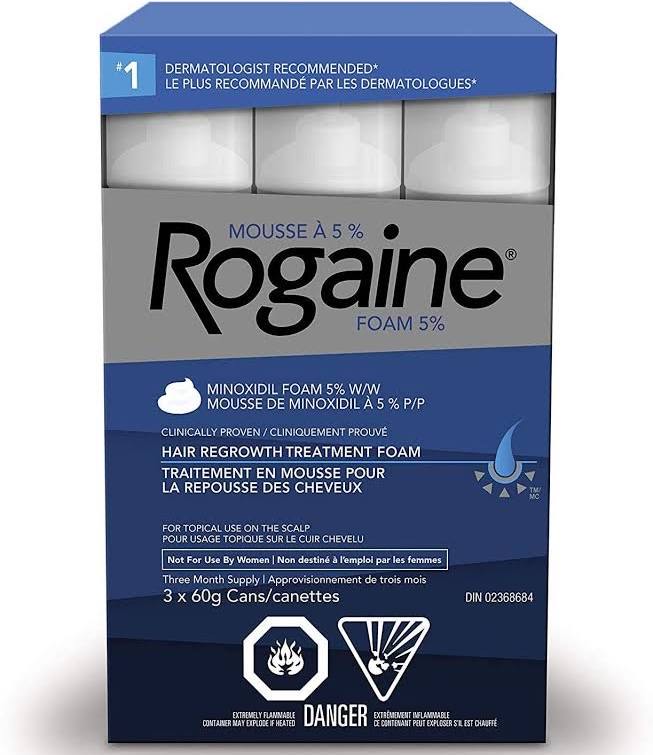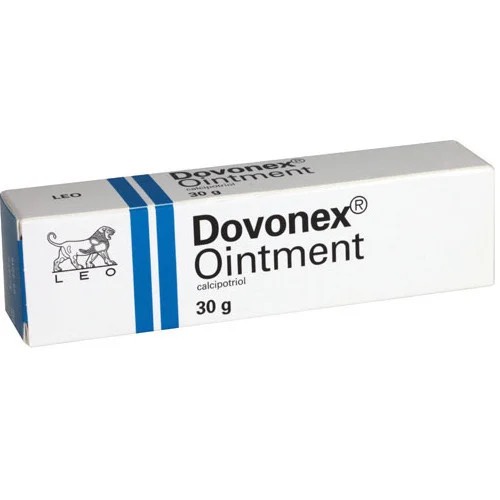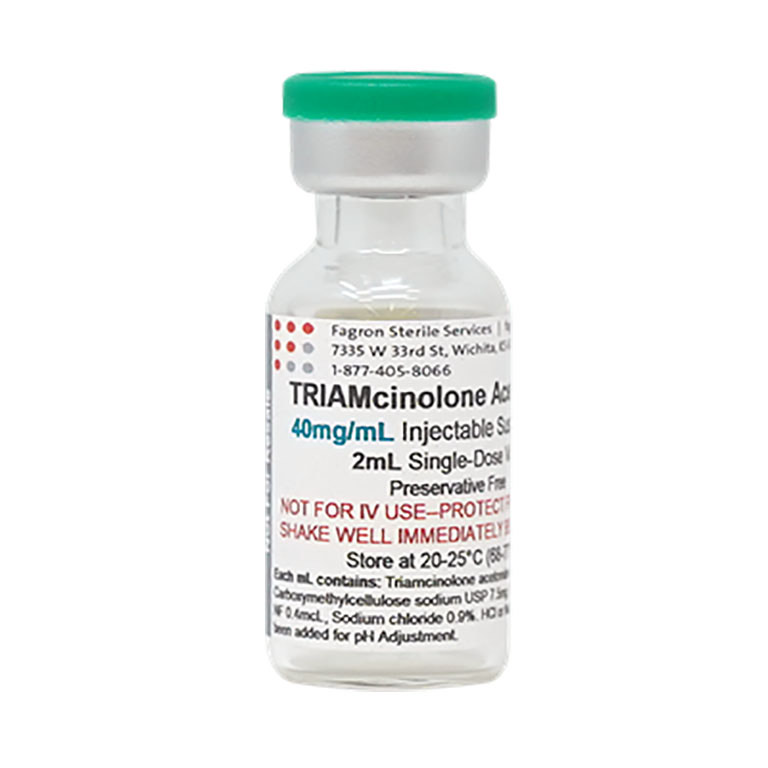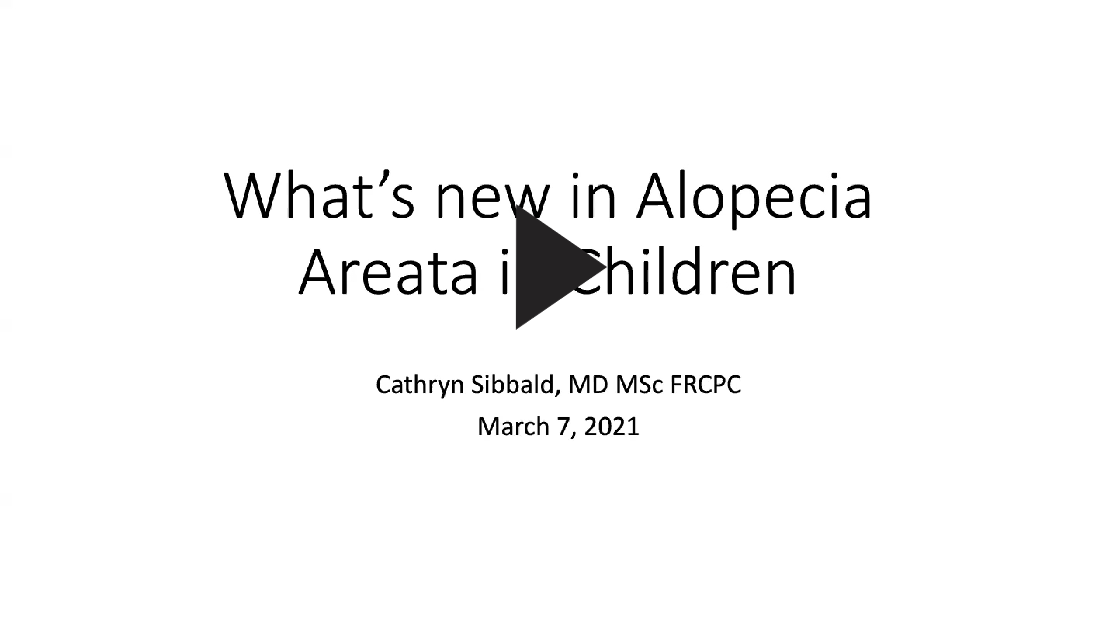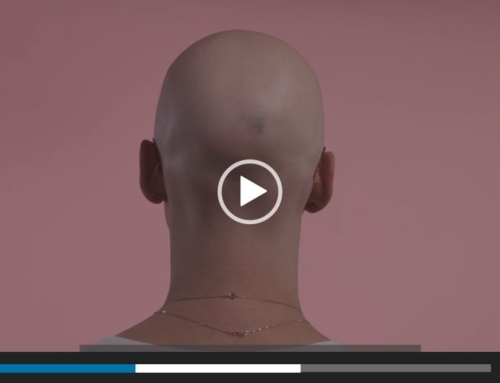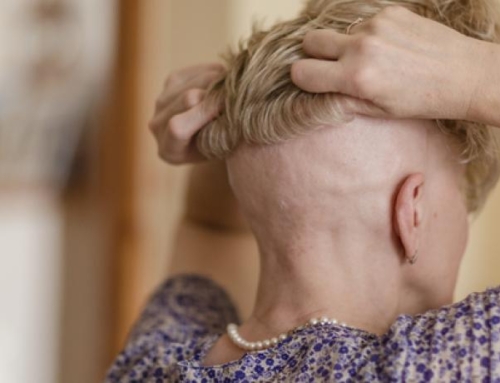By Anthony Gilding, HBSc
Over the course of several years, we have seen breakthrough therapeutic options become available for the treatment of alopecia areata (AA). However, here in Canada some of these options are available for use, and others are not. So, what exactly are your treatment options in 2023? In this article I will breakdown what we have available in Canada.
I would like to preface this article by reminding readers that we have yet to find a cure for AA. All of the treatment options I will discuss have been repurposed, meaning they were not intended to treat Alopecia Areata, but have shown success in some cases. As such, there is no guarantee that any of the treatment options discussed will effectively regrow hair for you. Furthermore, there is no guarantee that any regrown hair will last as long as you’d like. AA’s behaviour truly is unpredictable. By the same token, you may find that you achieve regrowth spontaneously or with the help of some of the options listed. In any case, know that CANAAF is here to support you along every step of your alopecia journey.
The Patient Journey Map
Topical & Intralesional Treatments
Topical treatments for Alopecia Areata are those that are applied directly to the affected area (scalp, eyebrow area, etc.). These are often favored over systemic (oral, injected) treatments as they tend to have more favorable side effect profiles. However, some people may find that topical treatments do not work as well due to the varying abilities of these medications to absorb through the skin and reach the intended areas such as receptors on the hair follicles or into the local circulation. Below are the topical treatment options available to Canadians.
Corticosteroid lotion (betamethasone, clobetasol, halobetasol)/injections (triamcinolone) into the skin: these work by stimulating the skin to produce proteins that inhibit inflammation. In theory, this should inhibit the inflammation around the hair follicles – giving the hair a chance to grow. Patients often achieve more success with corticosteroid injections compared to corticosteroid lotion or cream because the injections deliver the medication deep into the skin. A prescription is required in either case.
Minoxidil foam/lotion: this medication works by dilating (widening/opening) the blood vessels of the skin and extending the anagen (growth) phase of the hair cycle. This allows for greater blood flow to the hair follicles, which may stimulate hair growth. This medication can be purchased over the counter (as Rogaine or generic brand) and does not require a prescription.
Calcipotriol/Calcipotriene (+/- corticosteroid) ointment: this medication is a synthetic form of vitamin D and is commonly used for plaque psoriasis. Once absorbed, the synthetic vitamin D binds to the vitamin D receptors on the local skin and immune cells and regulates their behaviour. This medication is sometimes combined with corticosteroid to boost its anti-inflammatory properties. A prescription is required.
Diphencyprone (DCP)/Diphenylcyclopropenone (DPCP): this treatment for Alopecia Areata works by inducing allergic contact dermatitis which “tricks” the immune system into leaving the hair follicles alone and attacking the DCP/DPCP instead. It should be noted that this treatment is quite irritating to the scalp and often unbearable for many people. Moreover, DCP/DPCP is difficult to access as only select institutions are equipped to offer it. DCP/DPCP must be administered in a highly controlled manner as the person administering it, as well as anyone else who comes in contact with it can become allergic and react strongly to it. A prescription is required.
Janus Kinase (JAK) inhibitor ointment/cream/lotion: these medications work by inhibiting the JAK/STAT pathway – a biochemical pathway responsible for initiating immune system responses. As a result of this inhibition, the autoimmune response is dampened and the inflammation around the hair follicle subsides, allowing for hair growth. These medications were initially offered in the form of a pill; however, they can be compounded into a topical formulation. Similar to DCP/DPCP, topical JAK inhibitors are not available everywhere as very few pharmacies are able to make them. Furthermore, the cost of this formulation varies from pharmacy to pharmacy. Patients have reported prices of $150-$700 for a month supply. A prescription is required.
Systemic Treatments
Systemic treatments are those that are taken by mouth or injected intravenously (into a vein), intramuscularly (into the muscle), or subcutaneously (into the fat). These treatments for Alopecia Areata tend to be more effective as the medication is absorbed into the bloodstream and circulated throughout the body. However, because they are absorbed into the bloodstream the risk of side effects and other adverse effects is increased. Below are the systemic treatment options available to Canadians. A prescription is required for all of these options.
Corticosteroids (prednisone/prednisolone/dexamethasone/methylprednisolone): when taken orally, these medications work by stimulating the body to produce anti-inflammatory proteins that work to suppress inflammation. Oral/injected corticosteroids can only be taken for a short period of time and often come with a host of unfavorable side effects, so they are not commonly prescribed for AA as a longstanding treatment option. However, they may be prescribed in the beginning or in pulses while on another immunosuppressive medication such as methotrexate, which will be discussed later.
Minoxidil: when taken orally, this medication works by lowering your blood pressure. It works via the same mechanism as the topical formulation – dilating the blood vessels and increasing the duration of the anagen phase of the hair cycle. To mitigate a large impact on blood pressure, minoxidil is prescribed in low doses if it is being used to treat Alopecia Areata.
Methotrexate: this medication is a synthetic form of folic acid/folate (vitamin B9) and works by suppressing the enzymes (active proteins) responsible for nucleotide (DNA building blocks) synthesis. The result of this is decreased inflammation and decreased replication of the immune cells that cause inflammation. Thus, methotrexate is classified as an immunosuppressant and must be taken under the strict supervision of a physician. This supervision includes regular blood tests to monitor your liver function and white blood cell counts. Other immunosuppressants less commonly used for the treatment of Alopecia Areata include cyclosporine, azathioprine, sulfasalazine, and mycophenolate.
What’s Next in the Treatment of Alopecia Areata in Canada?
You may have heard that the JAK inhibitor Olumiant (baricitinib) was approved for the treatment of moderate to severe Alopecia Areata in the United States. This is the first ever approved treatment for Alopecia Areata! While this is incredibly exciting, JAK inhibitors are not approved for the treatment of Alopecia Areata here in Canada. This means, if you wanted to try a JAK inhibitor orally, you would have to pay out of pocket. This is not feasible for most people as the cost is upwards of $2000 CAD for a month supply. Alternatively, you could enroll in a JAK inhibitor clinical trial, though this is not always possible, and you can only take the medication for as long as the trial is running. Once the trial ends, you are no longer supplied with the JAK inhibitors.
We are hopeful that Health Canada, the regulatory body for medications and nutritional supplements in Canada, will approve Olumiant for the treatment of moderate to severe Alopecia Areata in the next 6-8 months. Though, I must warn that an exact timeline cannot be confirmed. Deuruxolitinib (formerly known as CTP-543) is another oral JAK inhibitor that has come to light as effective at treating Alopecia Areata and will also hit the market in the coming years!
If you have any questions or would like to learn more, feel free to contact me at science@canaaf.org
Anthony Gilding, HBSc
Director of Science & Research at CANAAF
science@canaaf.org
